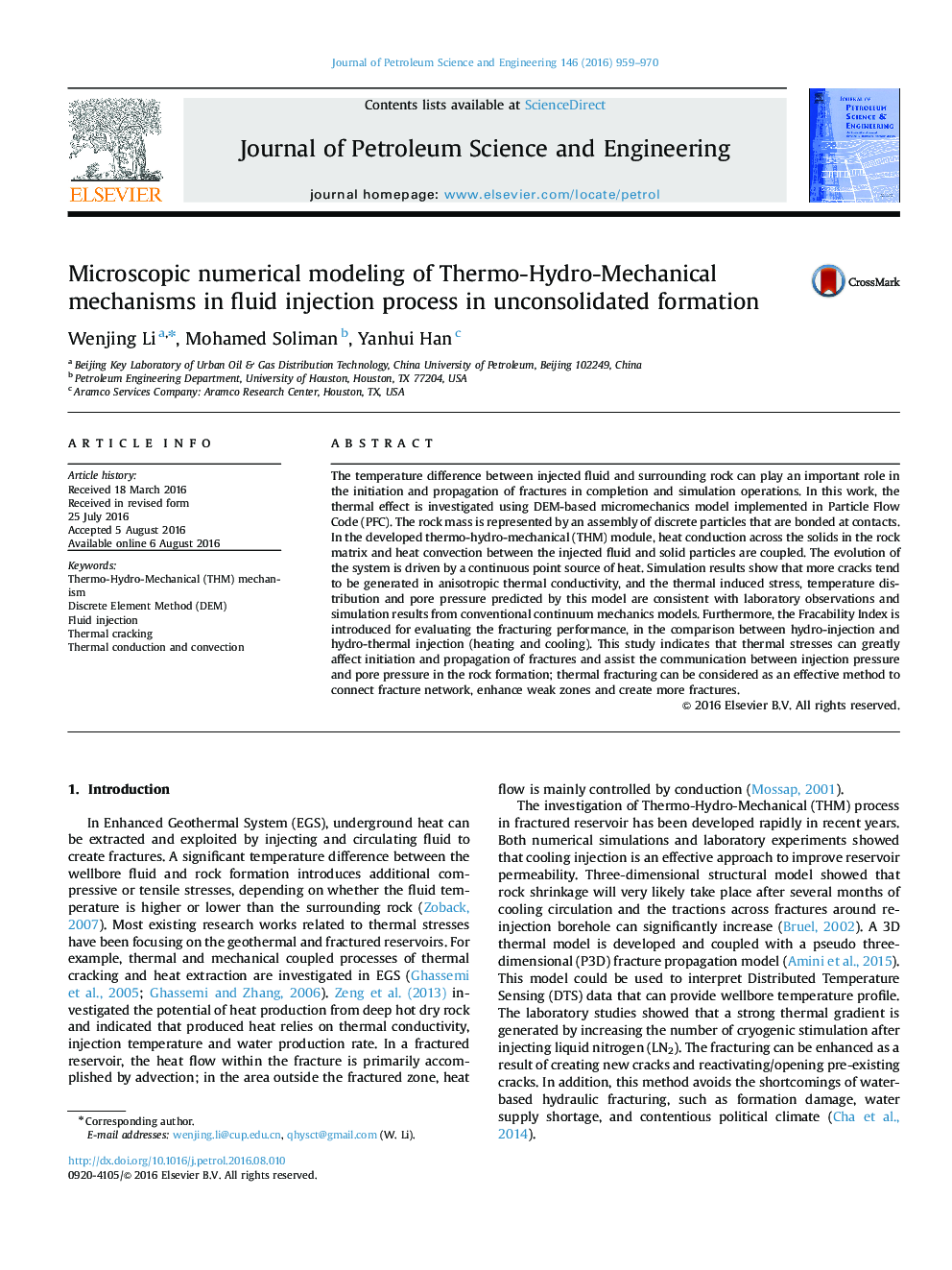| Article ID | Journal | Published Year | Pages | File Type |
|---|---|---|---|---|
| 8126026 | Journal of Petroleum Science and Engineering | 2016 | 12 Pages |
Abstract
The temperature difference between injected fluid and surrounding rock can play an important role in the initiation and propagation of fractures in completion and simulation operations. In this work, the thermal effect is investigated using DEM-based micromechanics model implemented in Particle Flow Code (PFC). The rock mass is represented by an assembly of discrete particles that are bonded at contacts. In the developed thermo-hydro-mechanical (THM) module, heat conduction across the solids in the rock matrix and heat convection between the injected fluid and solid particles are coupled. The evolution of the system is driven by a continuous point source of heat. Simulation results show that more cracks tend to be generated in anisotropic thermal conductivity, and the thermal induced stress, temperature distribution and pore pressure predicted by this model are consistent with laboratory observations and simulation results from conventional continuum mechanics models. Furthermore, the Fracability Index is introduced for evaluating the fracturing performance, in the comparison between hydro-injection and hydro-thermal injection (heating and cooling). This study indicates that thermal stresses can greatly affect initiation and propagation of fractures and assist the communication between injection pressure and pore pressure in the rock formation; thermal fracturing can be considered as an effective method to connect fracture network, enhance weak zones and create more fractures.
Related Topics
Physical Sciences and Engineering
Earth and Planetary Sciences
Economic Geology
Authors
Wenjing Li, Mohamed Soliman, Yanhui Han,
